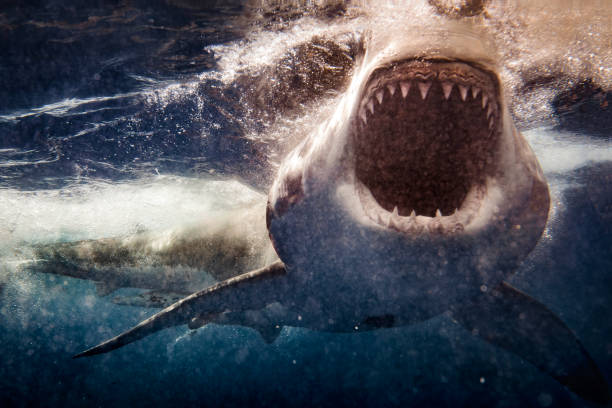You don’t see a shark skull every day. It is usually in a museum.
It must be prepared for display before you can see it. There are several steps involved in the restoration and mounting of a shark’s skeleton for exhibition. This blog will cover the basics of how to prepare shark specimens for display or collectors. Before you decide if this is the right project for you, we will explain how shark skeletons work. They are extremely valuable and can be used in museum-quality specimens.
How does this work? The first step is to remove the skin. After removing the shark’s skin, all organs and flesh are removed from the skeleton. Although this can be time-consuming and complex, it is necessary to preserve the shark’s skeleton.
The bones can be bleached to get a uniform color after the cleaning is done. To protect them against decay, they may be treated with a sealant. They are then mounted on a board or stand for display.
Although this process is time-consuming and laborious, the end result is well worth it. The unique exhibits made from shark skeletons are stunning and sure to amaze visitors. For more information, contact us.
It is important to keep your shark skeleton in good condition. The more delicate parts of the shark skeleton should not be handled by anyone but you.
You must take care of certain parts of the shark’s skeleton, such as the teeth and the arches. These delicate parts can be damaged or even broken if you touch them with your naked hands.
Handling shark bones requires you to use gloves and a pair forceps. Do not try to hold more than one shark bone in your hand. Always wear gloves when handling shark skeletons.
After all the pieces of the shark’s skeleton have been exposed, it is important to dry everything thoroughly before you put it back together. Shark fossils are mostly composed of calcium carbonate. If exposed to water too long, they will dissolve. Therefore, bone cleaning is important.
Special care must be taken when preserving specimens. Shark teeth contain mercury that cannot be removed.
Shark teeth are contaminated by mercury from their diet. Mercury-contaminated fish can cause mercury poisoning in shark teeth and flesh.
A baking soda paste is the best way to clean shark teeth. Mix the baking soda with water to form a paste. The paste is then applied to the tooth surfaces using an old toothbrush. After the paste has sat for five minutes, rinse it off.
Keep the shark skeleton in a sealed container if you don’t plan to display it immediately. To absorb moisture, fill the container with desiccant packs or dried rice. Silica gel packs can be used to absorb gas, vapour, and odour. You can also find activated carbon, molecular Sieve and clay desiccant packets.
There are some additional steps that you can take to make your shark skeleton look its best when it is time to display it. There are many ways to mount shark skulls. These include wire mesh, epoxy resin and polyester putty. The mounting method that is most suitable will depend on how strong the mounting must be.
After the shark skeleton has been mounted, it can be displayed for everyone to admire!
Collectors love shark skeletons. There are good reasons. These skeletons are a stunning sight and can be quite fascinating. Shark skeletons can be difficult to find. You will need to properly prepare one if you wish to add it to your collection.
Preparing a shark skull for display takes patience and time. Some people spend years perfecting this technique.
It is important to only hire a shark expert to manage your exhibit. Shark skeletons that aren’t properly prepared and maintained can easily be damaged.
First, remove the skin, flesh, organs, and bones. This can be done manually with a scalpel or small scissors. During this process, the team must take care not to break any bones.
After the flesh is removed, the bones can be cleaned and bleached. This preserves them and gives them a brighter look.
The bones are then assembled in the correct positions. As each bone needs to be placed exactly where it belongs, this can be time-consuming and laborious.
Once everything is in its place, the skeleton can be glued together. This makes the exhibit more durable and will last many years.
Every step requires knowledge and experience. This is why it should only be done by experts. This will ensure you achieve a spectacular result.
Avoid using harsh chemicals to preserve your specimen.
This is an absolute must! Avoid using harsh chemicals to clean the shark’s skeleton. The bones can be cleaned with a soft brush and warm soapy water. You can use mild bleach to clean the jaws.
Mounting a shark jaw in your exhibit requires special attention. Make sure that all teeth are properly aligned and that the joint is stable. Use epoxy to secure the pieces while they dry.
After the skeleton is cleaned and mounted it can be displayed! A shark skeleton is a wonderful addition to any collection. It will draw attention from anyone who sees it.
If possible, include information about the shark species, its size and where it was caught. This will educate people about these amazing creatures and their importance to our ocean ecosystems.
Last Thoughts
A shark exhibit can be made by anyone, but only a master will show the skeletons these terrifying creatures in their full glory. Through professionally prepared shark skull exhibits, visitors can learn more about their behaviour and anatomy. You can see more Great White Shark skeletons on our Instagram feed!



